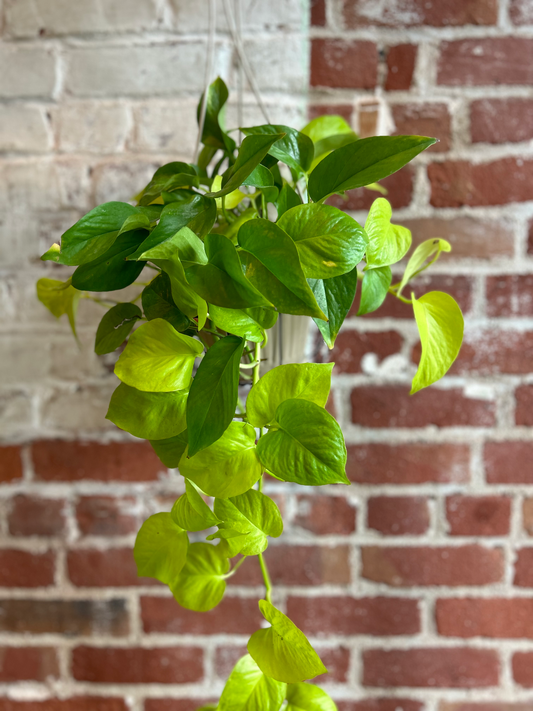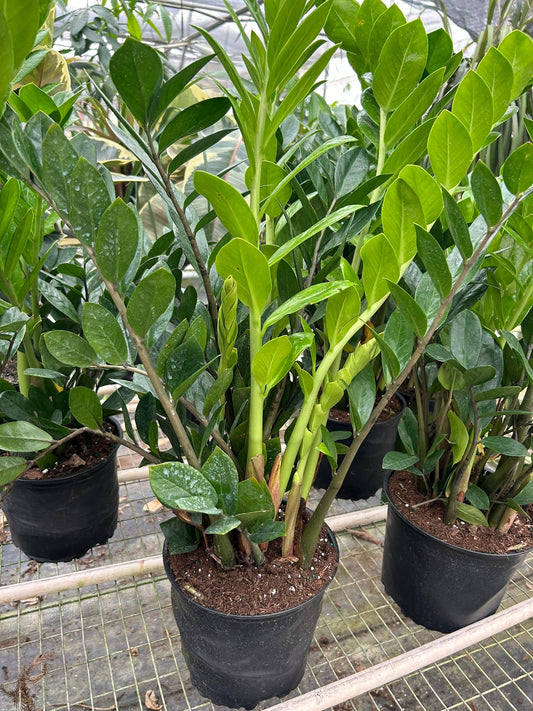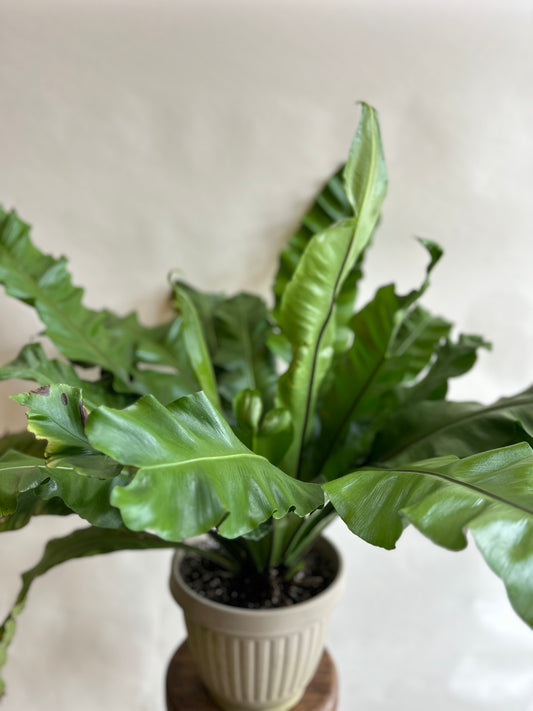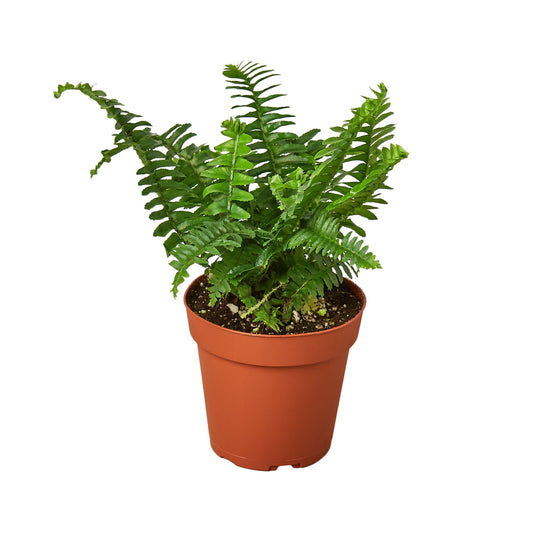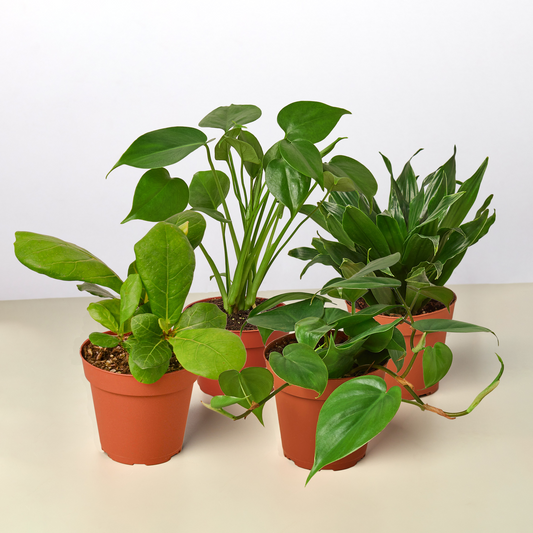Are Flowering Maple Plants Toxic to Cats?
Cafe Planta Team
If you're a cat owner and plant lover, you might find yourself in a bit of a pickle when it comes to choosing the right greenery for your home. With their vibrant colors and charming appearance, flowering maple plants—also known as Abutilon—can be quite tempting. But the big question is, are they safe for your feline friends?
This article will address the burning question of whether flowering maple plants pose a threat to your cats. We'll dive into the specifics of what makes a plant toxic or non-toxic, and we'll also share some tips on keeping your cats safe around plants. Additionally, we'll explore how to care for flowering maples, so they thrive in your living space, adding beauty without any worry.
Understanding Plant Toxicity
When it comes to plant toxicity, it's crucial to know what exactly we mean by "toxic." In the context of plants and pets, toxicity refers to the presence of substances that can cause harm if ingested or, in some cases, even touched. Symptoms can range from mild irritation to severe health issues, depending on the plant and the amount consumed.
Some common signs of plant toxicity in cats include:
- Vomiting or diarrhea
- Drooling or excessive salivation
- Lethargy or weakness
- Tremors or seizures
- Difficulty breathing
It's always a good idea to familiarize yourself with the plants in your home and their potential effects on your pets. While some plants are only mildly irritating, others can be downright dangerous. So, where do flowering maples stand?
Are Flowering Maple Plants Toxic to Cats?
The good news is that flowering maple plants are generally considered non-toxic to cats. According to the American Society for the Prevention of Cruelty to Animals (ASPCA), they are not listed among the plants that pose a risk to our feline companions. This means you can enjoy their delightful blooms without worrying too much about your curious kitty getting into trouble.
However, it's important to note that while they aren't toxic, that doesn't mean they are completely safe for your cat to munch on. Eating large amounts of any plant material can cause digestive upset in cats. If your cat decides to take a nibble, they might experience some mild stomach upset, but it's unlikely to be anything serious.
To be on the safe side, it's always best to observe your cat's behavior around new plants and consult your veterinarian if you notice any unusual symptoms.
Keeping Cats Safe Around Houseplants
Even though flowering maples are non-toxic, there are still some steps you can take to minimize any potential risks and keep your feline friend safe:
- Placement: Place plants out of reach of your cat, on high shelves or in rooms that your cat doesn't have access to.
- Training: Use positive reinforcement to train your cat to stay away from plants. This might involve rewarding them for ignoring the plants or using deterrents like citrus peels, which cats usually dislike.
- Distractions: Provide plenty of toys and scratching posts to keep your cat entertained and less likely to explore your plants.
By taking these precautions, you can help ensure your home remains a safe and harmonious environment for both your plants and your pets.
Caring for Your Flowering Maple
Now that we've established that flowering maples are safe for your cats, let's talk about how to care for them. These plants are relatively easy to maintain and can add a lovely touch of color to your home.
Here are some basic care tips:
- Light: Flowering maples love bright, indirect light. Too much direct sunlight can scorch their leaves, while too little light might result in fewer blooms.
- Watering: Keep the soil consistently moist but not waterlogged. It's a good idea to water them when the top inch of soil feels dry to the touch.
- Humidity: These plants thrive in moderate to high humidity. If your home is particularly dry, consider misting the leaves or placing a humidifier nearby.
- Feeding: During the growing season, fertilize your plant every month with a balanced, water-soluble fertilizer to encourage healthy growth and blooming.
With a little attention and care, your flowering maple can flourish, providing a cheerful backdrop to your living space.
Designing with Flowering Maples
Flowering maples aren't just safe and easy to care for—they're also versatile when it comes to interior design. Their vibrant flowers can complement various décor styles, adding a pop of color to any room.
Here's how you can incorporate them into your home design:
- Color Coordination: Use the plant's natural colors to match or contrast with your existing decor. For instance, if you have a lot of neutral tones, a brightly colored flowering maple can act as a focal point.
- Grouping: Combine flowering maples with other non-toxic plants to create a lush, indoor garden feel. Grouping plants together can also help improve humidity levels, which benefits all your houseplants.
- Containers: Choose pots that reflect your style—whether they are modern, rustic, or vintage. The container can greatly influence the overall look and feel of the plant's presentation.
By thoughtfully placing flowering maples in your home, you can create a harmonious and visually appealing environment that suits your taste.
Common Issues with Flowering Maples
Like any plant, flowering maples can encounter a few problems along the way. Here are some common issues and how you can tackle them:
- Pests: Aphids and spider mites are common problems. You can treat them by wiping the leaves with a damp cloth or using insecticidal soap.
- Leaf Drop: This can be due to overwatering or sudden temperature changes. Make sure your plant is in a stable environment and adjust your watering schedule if needed.
- Yellowing Leaves: Often a sign of nutrient deficiency or improper watering. Ensure you're feeding the plant appropriately and check the soil moisture levels regularly.
Addressing these issues promptly can help keep your flowering maple healthy and vibrant.
Alternatives to Flowering Maples
If you're looking for other non-toxic options to add to your pet-friendly home, there are plenty of plants to consider:
- Spider Plants: Known for their air-purifying qualities, spider plants are safe for cats and easy to care for.
- Bamboo Palm: This plant adds a tropical feel and is safe for pets.
- Boston Fern: These lush ferns are non-toxic to cats and can add a lovely, classic touch to any room.
These alternatives can provide a similar aesthetic appeal while ensuring your pets remain safe and sound.
When to Consult a Vet
While flowering maples are generally safe, it's always best to err on the side of caution. If you notice your cat displaying unusual behavior or symptoms after interacting with a plant, it's essential to consult your veterinarian promptly.
Some signs that warrant a vet visit include:
- Persistent vomiting or diarrhea
- Changes in appetite or energy levels
- Any signs of distress or discomfort
Trust your instincts as a pet parent. If something feels off, don't hesitate to reach out to a professional.
Final Thoughts
In summary, flowering maple plants are a charming and safe addition to a cat-friendly home. With proper care, they can thrive and add beauty to your space without posing a risk to your feline companions. Remember to keep an eye on your cats' interactions with any plants and consult a vet if you have concerns.
At Cafe Planta, we're here to help you create a beautiful, thriving plant collection that suits your lifestyle and enhances your home. Whether you're looking for plant care accessories or just want to chat about your plant journey, you can always reach out to us via email or send us a message on Instagram. We believe plants have the power to connect us with nature and each other, and we can't wait to share that joy with you.


